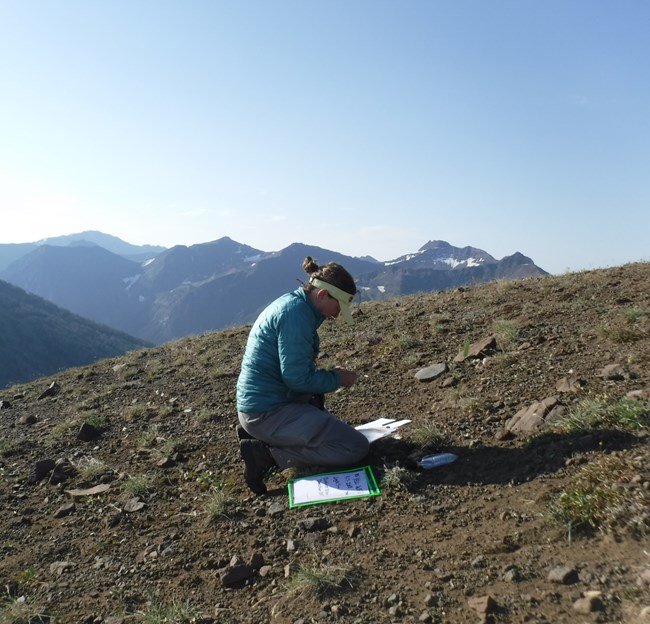
NPS Photo
Alpine vegetation and soils above tree line are shaped by extreme conditions. Alpine plants must adapt to high winds, low temperatures, scouring and burial by snow and ice, intense solar radiation, and a short growing season. As a result, plants are shorter, some grow slowly, and many have leaves resistant to frost damage and desiccation. Alpine communities are sensitive to changes in weather and climate, air quality that affects soil nutrients available to plants, and human and natural disturbance.
Soil temperature, air temperature, precipitation, and vegetation traits all interact to shape alpine communities. Integrating data from all of these factors improves our understanding of how changes in climate may affect alpine vegetation. Higher temperatures and variable precipitation patterns are projected for this region. These kinds of changes, including shorter periods of snow pack and more rain events, may alter native species composition and favor invasive plants.
Since 2011, we have been monitoring alpine communities atop four summits of the Absaroka Range along the east boundary of Yellowstone National Park. We identified this vital sign as part of a 2010 planning effort to understand how high elevation landscapes in parks are responding to climate change. Our methods follow a standardized NPS protocol, based on internationally recognized methods, the Global Observation Research Initiative in Alpine Environments (GLORIA). Several national parks contain GLORIA monitoring sites throughout the western United States.
We Ask:
-
What are the current status and trends in vegetation composition and structure of native plant communities?
-
What are the current status and trends in invasive and exotic plant species cover?
-
What are the current status and trends in soil condition and temperature?
-
What are community vulnerabilities to climate, soil nutrients, and disturbance?
We Measure:
-
hourly soil temperature data
-
percent cover for all native and nonnative vascular plants
-
soil type and chemical composition
We also collect anecdotal information on human or natural disturbance, such as signs of human presence or wildlife droppings and sightings.
View the protocol for monitoring this vital sign.
Publications
Source: NPS DataStore Collection 7729. To search for additional information, visit the NPS DataStore.
Source: NPS DataStore Collection 7728. To search for additional information, visit the NPS DataStore.
Source: NPS DataStore Collection 9174. To search for additional information, visit the NPS DataStore.
Did you know...
We also monitor climate because of its significant influence across park natural resources.
Last updated: June 12, 2025
